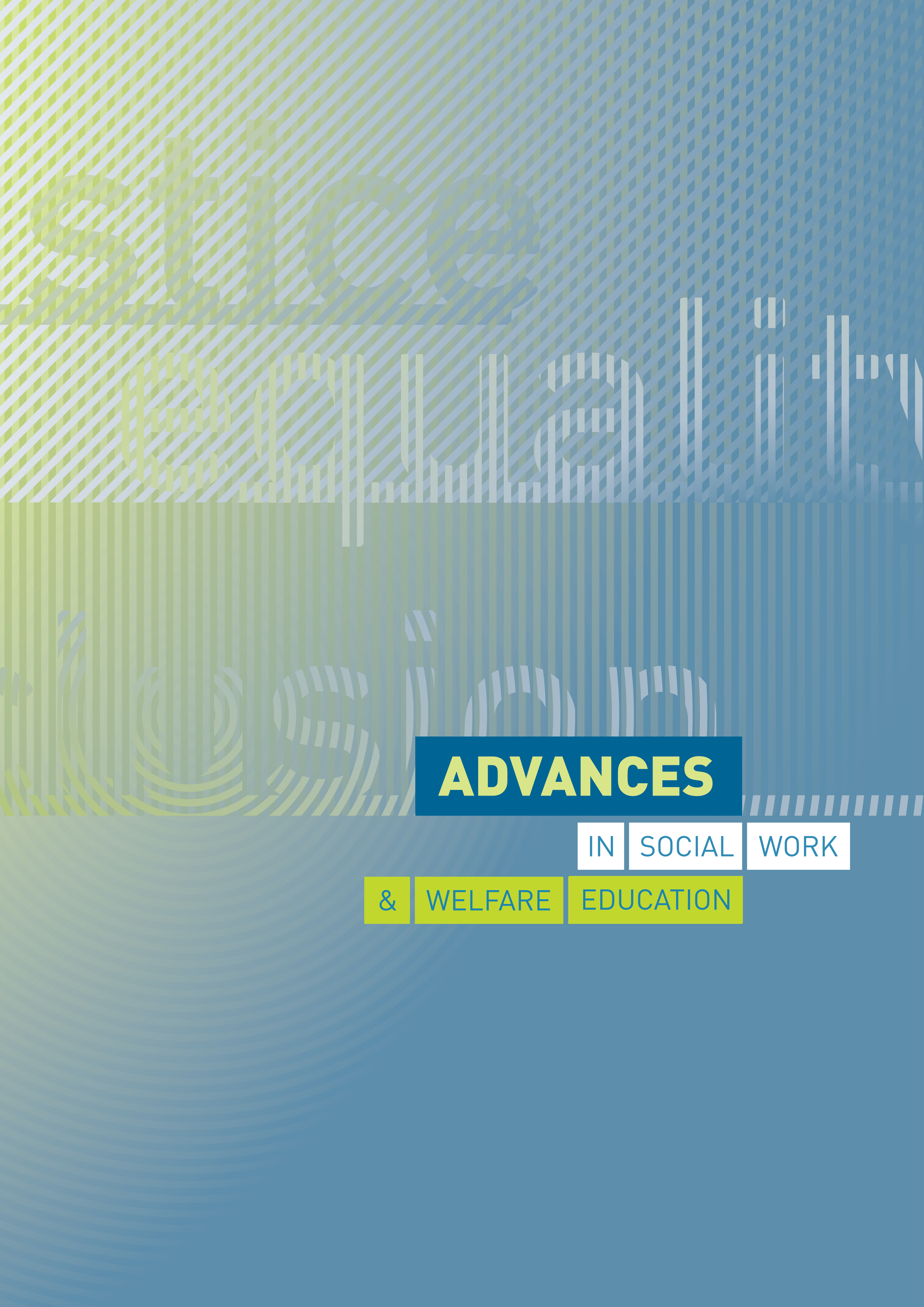Developing a Multi-placement Opportunity in a Human Service Agency
Keywords:
Social work, Social work placements, Field education, SupervisionAbstract
The human services sector is under increasing pressure to deliver services to clients, improve social justice outcomes, and host social work students on field placements – all within the limited human, financial, and organisational resources of the agency. This article outlines how a community housing organisation and a university in Queensland collaborated to support social justice outcomes while concurrently meeting the learning needs of social work students on placement. This article, jointly authored by the agency and university, discusses the organic development and goodwill between the field education team and the housing agency to support and shape practice. This collaboration has used Kolb’s (1984) learning cycle as a framework to guide the project team reflection and knowledge creation. The team adopted this process of reflection to illustrate the importance of relationship and collaboration in working together to develop goals and meet challenges in field placement and agency demands. The use of collaborative inquiry has also been included to illustrate the development of the working relationship.
References
AASW. (2019). Australian social work education and accreditation standards (ASWEAS). AASW: Melbourne. Retrieved from https://www.aasw.asn.au/careers-study/education-standards-accreditation
Australian Institute of Health and Welfare (AIHW). (2018). Social housing dwellings. Source data tables and supplementary data tables. Retrieved from https://www.aihw.gov.au/getmedia/b9376f6d-8d5e-4561-87e8-f36c36d09e60/aihw-hou-296-social-housingdwellings-data-tables.xls.aspx
Barton, H., Bell, K., & Bowles, W. (2005). Help or hindrance? Outcomes of social work student placements. Australian Social Work, 58(3), 301–312.
Bogo, M. (2015). Field education for clinical social work practice: Best practices and contemporary challenges. Clinical Social Work Journal, 43(3), 317-324. doi:10.1007/s10615-015-0526-5
Bogo, M., Regehr, C., Power, R., & Regehr, G. (2007). When values collide: Field instructors’ experiences of providing feedback and evaluating competence. The Clinical Supervisor, 26(1-2), 99–117. doi:10.1300/J001v26n01_08
Bronstein, L. R. (2003). A model for interdisciplinary collaboration. Social Work, 48(3), 297–306. https://doi.org/10.1093/sw/48.3.297
Cano, M. (2020). Diversity and inclusion in social service organizations: Implications for community partnerships and social work education. Journal of Social Work Education, 56(1), 105–114. doi:10.1080/10437797.2019.1656577
Cleak, H., Hawkins, L., & Hess, L. (2000). Innovations in field options. In L. Cooper & L. Briggs (Eds.), Fieldwork in the human services (pp. 160–174). St Leonards: Allen & Unwin.
Cleak, H., & Smith, D. (2012). Student satisfaction with models of field placement supervision. Australian Social Work, 65(2), 243–258. doi:10.1080/0312407X.2011.572981
Cleak, H., & Zuchowski, I. (2018). Empirical support and considerations for social work supervision of students in alternative placement models. Clinical Social Work Journal, 47(1), 32–42. doi:10.1007/s10615-018-0692-3
Cleak, H. M., & Wilson, J. (2019). Making the most of field placement (4th ed.). South Melbourne, VIC: Cengage Learning.
Community Housing Industry Association (CHIA) Victoria. (2019). Community housing workforce capability framework. Retrieved from https://chiavic.com.au/wpcontent/uploads/2019/09/Community-Housing-Workforce-Capability-Framework-1.pdf
Department of Housing and Public Works (DHPW). (2016). Working together. Discussion paper, Department of Housing & Public Works. Retrieved from http://www.hpw.qld.gov.au/SiteCollectionDocuments/HousingDiscussionPaper.pdf
Emmens, B. (2016). Conscious collaboration: Re-thinking the way we work together for good. London: Palgrave Macmillan. doi:10.1057/978-1-137-53805-5
Flanagan, K., Levin, I., Tually, S., Varadharajan, M., Verdouw, J., Faulkner, D., … Vreugdenhil, A. (2020). Understanding the experience of community housing pathways, AHURI Final Report No. 324. Australian Housing and Urban Research Institute. Retrieved from http://www.ahuri.edu.au/research/final-reports/324. doi:10.18408/ahuri-4118301
Grise-Owens, E., Miller, J., Escobar-Ratliff, L., Addison, D., Marshall, M., Trabue, D. (2016). A field practicum experience in designing and developing a wellness initiative: An agency and university partnership. Field Educator, 6(2), 1-10.
Hall, V., & Wallace, M. (1993). Collaboration as a subversive activity: A professional response to externally imposed competition between schools? School Organisation, 13(2), 101–117.
Hay, K., & Brown, K. (2015). Social work practice placements in Aotearoa New Zealand: Agency managers’ perspectives. Social Work Education, 34(6), 700–715.
Hay, K., Dale, M., & Yeung, P. (2016). Influencing the future generation of social workers’: Field educator perspectives on social work field education. Advances in Social Work and Welfare Education, 18(1), 39–54.
Hemy, M., Boddy, J., Chee, P., & Sauvage, D. (2016). Social work students “juggling” field placement. Social Work Education, 35(2), 215–228. https://doi.org/10.1080/02615479.2015.1125878
Hughes, M., & Wearing, M. (2017). Organisations and management in social work (3rd ed.). London, UK: SAGE.
Kolb, D. (1984). Experiential learning as the source of learning and development. New Jersey: Prentice Hall.
Lucas, J. J., & Vassos, S. (2019). Pedagogical intent and placement diversity in social work field education: One university’s experiences [online]. Advances in Social Work and Welfare Education, 21(1), 51–66.
Osmond, J. (2004). Formalizing the unformalized: Practitioners’ communication of knowledge in practice. British Journal of Social Work, 34(5), 677–692. https://doi.org/10.1093/bjsw/bch084
Powell, A., Meltzer, A., Martin, C., Stone, W., Liu, E., Flanagan, K., Muir, K. & Tually, S. (2019) The construction of social housing pathways across Australia, AHURI Final Report No. 316, Australian Housing and Urban Research Institute Limited, Melbourne, https://www.ahuri.edu.au/research/final-reports/316, doi:10.18408/ahuri-7118101.
Spencer, A., & McDonald, C. (1998). Omissions and commissions: An analysis of professional field education literature, Australian Social Work, 51(4), 9–18. doi:10.1080/03124079808411239
Zuchowski, I. (2014). Getting to know the context: The complexities of providing off-site supervision in social work practice learning, The British Journal of Social Work, 46(2), 409–426.
Zuchowski, I. (2015). Field education with external supervision: Supporting student learning. Field Educator, 5(2), 1–17.
Downloads
Published
Issue
Section
License
Copyright (c) 2021 Copyright © Australian & New Zealand Social Work and Welfare Education and Research

This work is licensed under a Creative Commons Attribution 4.0 International License.
Advances in Social Work & Welfare Education by Australian and New Zealand Social Work and Welfare Education and Research (ANZSWWER) is licensed under CC BY 4.0




